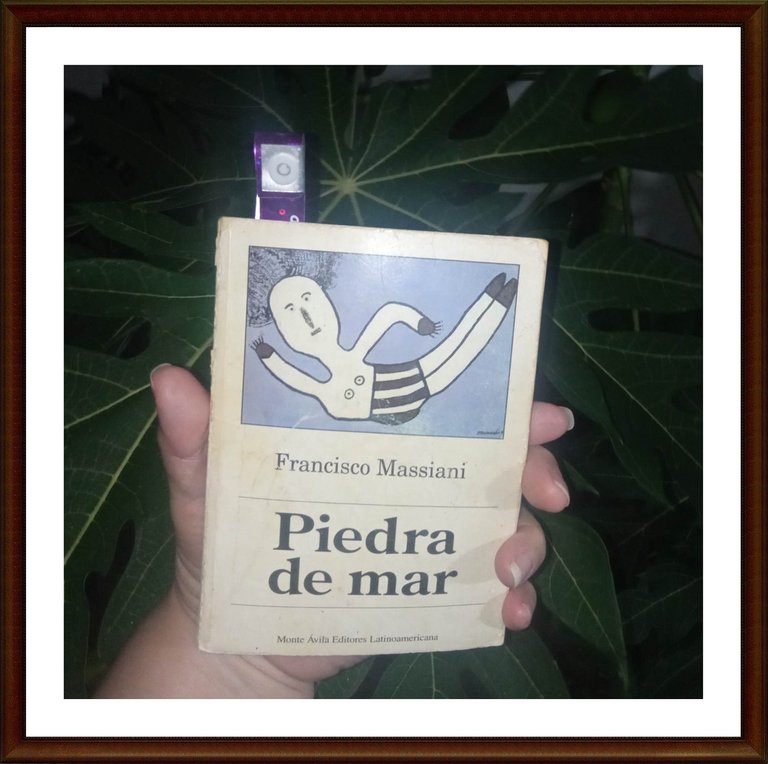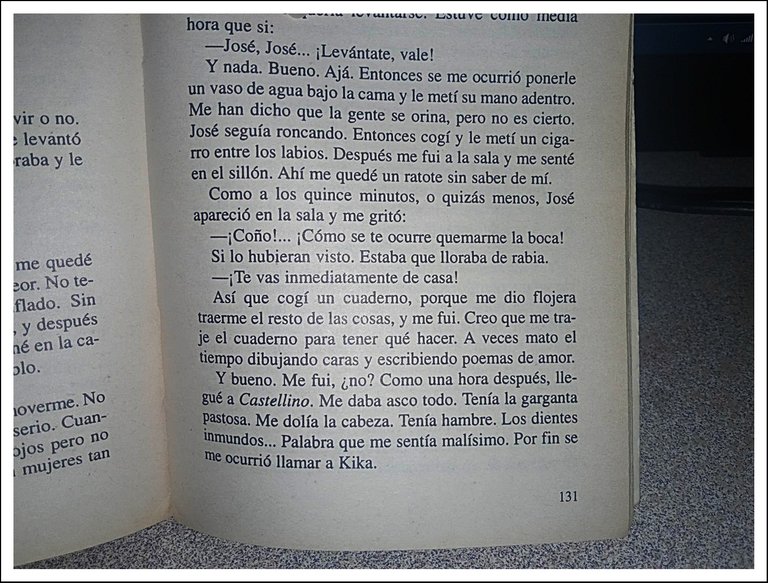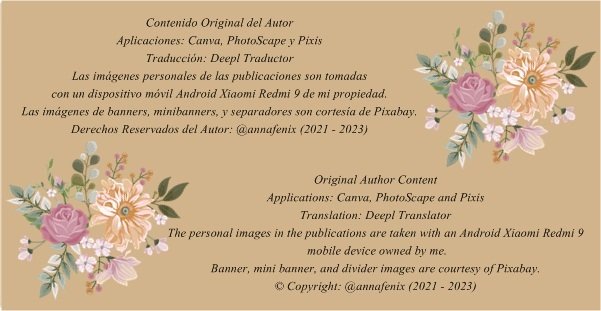PIEDRA DE MAR, A CLASSIC OF VENEZUELAN LITERATURE (Eng - Esp)

ENGLISH
Good morning to all reading lovers, today I want to talk about "Piedra de Mar", a work that I had the opportunity to read about 20 years ago but in a rushed way, since it was the bibliography selected to exercise my students in the process of analysis of narrative texts, in the subgenre "novel", and we had to read little by little the story to extract from it all the characteristics that were required in the mentioned analysis. Even so, I enjoyed it, but recently I selected it as one of the works I wanted to read in this 2023, and now I share with you a personal analysis of it.

SUMMARY OF "PIEDRA DE MAR"
Piedra de Mar, by writer Francisco Massiani, is a novel set in the Caracas scenario of the 60's, whose author, of Venezuelan origin, was 24 years old at the time of writing.

This work with a mixture of colloquial and literary language, and whose protagonist narrator addresses three specific readers: José, who was his friend and confidant; Carolina, the girl he fell in love with; and finally, the audience; tells the story of Corcho, a shy, low self-esteem, insecure and introvert boy, who falls in love with Carolina, a conceited and arrogant girl who, throughout the story, only makes him feel more diminished than he already feels, and rejects him in many ways, using offensive words that often hurt him. Even so, Corcho remains obsessed with winning her over amidst the negative influence of Marcos, the play's antagonistic character, who is always looking for ways to be the center of attention and overshadow Corcho's attempts.
The story and its situations are told to José, Corcho's friend who knows everything that happens in his life, advises him, and even expresses his desire to write down his experiences. José appears as the main character from the moment he becomes the listener of this story, but within it is also reflected his idyll with Julia, his girlfriend, who is a bitter girl who constantly argues with him.
At the beginning of the play, on a day at the beach, Corcho, frustrated by another failed attempt to conquer Carolina, went for a walk and found some pebbles in the sand, from which he chose the prettiest one and kept it as a good luck charm that would allow him to achieve all his desires.

MY VISION OF THE WORK
Piedra de mar is a novel that reflects the freshness of the years of youth, but also the conflicts and confusions that are debated in the midst of that complex transition that exists between adolescence and puberty where they begin to uncover the forbidden things and there is a natural nervousness to do so.

The author manages to develop a story with a language that is totally adapted to the time and age of his protagonists, since at that moment in his life, he is, so to speak, finalizing that transition.
Youth slang tends to be very formal when young people are in front of their parents, teachers, and relatives; but when they are in their own environment, they are no longer shy of anything and express themselves very openly, informally, even using vulgar language in their daily expressions and when relating their first personal adventures. In this regard, some phrases and expressions are extracted from the play that emphasize this vision:
What the hell!
Do you want a fart?
Wasn't I with you, you idiot?
Stop being a pain in the ass, you jerk!
Ah vaina, mijito... leave me alone!
Cunt! How can you think of burning my mouth?!"Once I passed her a piece of paper that said: "I want to touch your breasts", and she replied: "Rude". In spite of my shyness, one evening, when it was getting dark, we hid behind some bushes and there I felt for the first time those warm, comfortable breasts."
"... until I felt like peeing, when I took out the little bird I started: "Piss, pee, pee...", the dwarf came in and also started to pee. It is something strange, but when there is someone strange I can't pee, if I know that person but I don't like him/her, I can't pee in front of him/her either... when I want to test if someone is my friend or not, I invite him/her to pee with me".

This typical verbal disposition of the youth that only manifests itself among them in a very jealous and private way, enjoys a repertoire of expressions that in Massiani's work gave a comic and amusing touch throughout its development, but without forgetting that the main theme was concentrated in the emotional conflicts that unleashed very delicate decisions and situations in the lives of his characters, especially in Corcho, its main character, who in the midst of his shyness and insecurity, went through very sad moments before reaching a stage of stability in his love life, and clung so tightly to an amulet that only then he could feel the necessary strength to get there.

Thank you very much for visiting my blog. I hope you have enjoyed this brief journey through this Venezuelan work that celebrates 55 years since its publication, and that marked the beginning of its creator. Today it is considered a classic of juvenile narrative.

ESPAÑOL
Buenos días a todos los amantes de la lectura, hoy les quiero hablar de “Piedra de Mar”, una obra que tuve la oportunidad de leer hace aproximadamente 20 años pero de manera atropellada, ya que era la bibliografía seleccionada para ejercitar a mis alumnos en el proceso de análisis de textos narrativos, en el subgénero “novela”, y debíamos ir leyendo poco a poco la historia para extraer de ella todas las características que se exigían en el mencionado análisis. Aun así, la disfruté, pero recientemente la seleccioné como una de las obras que quería leer en este 2023, y ahora les comparto un análisis personal de la misma.

RESUMEN DE “PIEDRA DE MAR”
Piedra de Mar, del escritor Francisco Massiani, es una novela desarrollada en el escenario caraqueño de los años 60, cuyo autor de origen venezolano, contaba con 24 años al momento de escribirla.

Esta obra con una mezcla de lenguaje coloquial y literario, y cuyo narrador protagonista se dirige a tres lectores específicos: José, quien era su amigo y confidente; Carolina, la chica de quien se enamoró; y por último, el público; relata la historia de Corcho, un chico tímido, de baja autoestima, inseguro e introvertido, que se enamora de Carolina, una chica presumida y arrogante que a lo largo de toda la historia, sólo lo hace sentir más disminuido de lo que ya se siente, y lo rechaza de muchas maneras, utilizando palabras ofensivas que lo hieren a menudo. Aun así, Corcho sigue obsesionado por conquistarla en medio de la influencia negativa de Marcos, el personaje antagónico de la obra, que siempre busca las maneras de ser el centro de atención y opacar los intentos de Corcho.
La historia y sus situaciones, son relatadas a José, el amigo de Corcho que conoce todo lo que sucede en su vida, lo aconseja, y hasta le manifiesta querer escribir sus vivencias. José figura como personaje principal desde el momento en que se convierte en el oyente de esta historia, pero dentro de ésta también se refleja su idilio con Julia, su novia, que es una chica amargada que discute constantemente con él.
Al inicio de la obra, en un día de playa, Corcho frustrado por otro intento fallido de conquistar a Carolina, se fue a caminar y se encontró con unas piedritas en la arena, de las cuales escogió la más bonita y la guardó como un amuleto de buena suerte que le permitiría alcanzar todos sus anhelos.

MI VISIÓN DE LA OBRA
Piedra de mar es una novela que refleja la frescura de los años de juventud, pero también los conflictos y confusiones que se debaten en medio de esa transición tan compleja que existe entre la adolescencia y la pubertad donde se empiezan a destapar las cosas prohibidas y existe un nerviosismo natural al hacerlo.

El autor logra desarrollar una historia con un lenguaje totalmente adaptado a la época y a las edades de sus protagonistas, ya que en ese momento de su vida, él se encuentra, por decirlo de alguna manera, finalizando esa transición.
El argot juvenil tiende a ser muy formal cuando los jóvenes se encuentran frente a sus padres, maestros, y familiares; pero al estar en su medio, ya no se cohíben de nada y se expresan muy abiertamente, de manera informal, usando incluso el lenguaje vulgar dentro de sus expresiones cotidianas y al relatar sus primeras aventuras personales. Al respecto se extraen de la obra algunas frases y expresiones que hacen énfasis en esta visión:
¡Qué diablos!
¿Quieres peo?
¿No estuve contigo, idiota?
¡Deja el fastidio, carenalga!
¡Ah vaina, mijito… déjame en paz!
¡Coño!, ¿Cómo se te ocurre quemarme la boca?“Una vez le pasé un papelito que decía: “Quiero tocarte los senos”, y ella me respondió: “Grosero”. A pesar de mi timidez, una tarde, cuando oscurecía, nos escondimos detrás de unas matas y allí sentí por primera vez esos senitos cómodos y tibios”.
”… hasta que me dieron ganas de hacer pipí, cuando saqué el pajarito comencé: “Pis, pis pis…”, entró el enano y también se puso a orinar. Es algo raro, pero cuando hay alguien extraño no puedo orinar, si conozco a esa persona pero me cae mal, tampoco puedo orinar delante de ella… cuando quiero probar si alguien es amigo mío o no, lo invito a mear conmigo”.

Esta disposición verbal típica de la juventud que sólo se manifiesta entre ellos de manera muy celosa y privada, goza de un repertorio de expresiones que en la obra de Massiani dieron un toque cómico y divertido a lo largo de su desarrollo, pero sin obviar, que el tema principal se concentraba en los conflictos emocionales que desataron decisiones y situaciones muy delicadas en la vida de sus personajes, especialmente en Corcho, su protagonista, quien en medio de su timidez e inseguridad, atravesó momentos muy tristes antes de llegar a una etapa de estabilidad en su vida sentimental, y se aferró tan fuerte a un amuleto que sólo así podía sentir la fortaleza necesaria para llegar allí.

Muchas gracias por visitar mi blog. Espero que hayan disfrutado este breve recorrido por esta obra venezolana que cumple 55 años de su publicación, y que marcó el inicio de su creador. Hoy en día está considerada como un clásico de la narrativa juvenil.

FUENTE DE INFORMACIÓN CONSULTADA // SOURCE OF INFORMATION CONSULTED
Piedra de Mar – Francisco Massiani // El rincón del vago
FUENTE DE IMÁGENES // SOURCE OF IMAGES
Imágenes 1 y 4 - Galería Personal
Imagen 2 - Francisco Massiani // Literatura venezolana
Imagen 3 - Pixabay


¡Hola!
Tu publicación ha hecho resurgir recuerdos con ese libro. Fue uno de los libros que leí cuando estaba en el colegio, ya me había olvidado de su existencia. Pero gracias por recordarme esa lectura y gratos momentos de debates con mis compañeros acerca del libro.
Saludos☺️
Qué bonito saber eso amiga, yo la leí por primera vez para ayudar a mi hijo en su análisis del colegio, y después la trabajé con mis alumnos... es un relato muy fresco y con un contexto que fluye fácilmente. Vale la pena leerla de nuevo. Saludos.